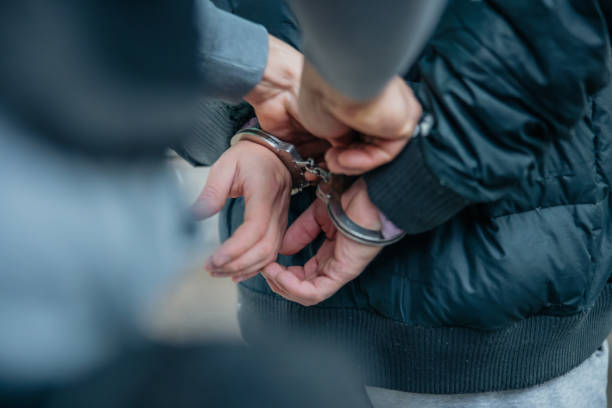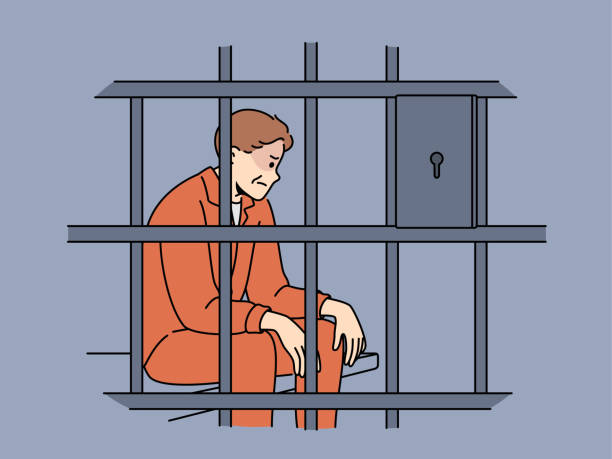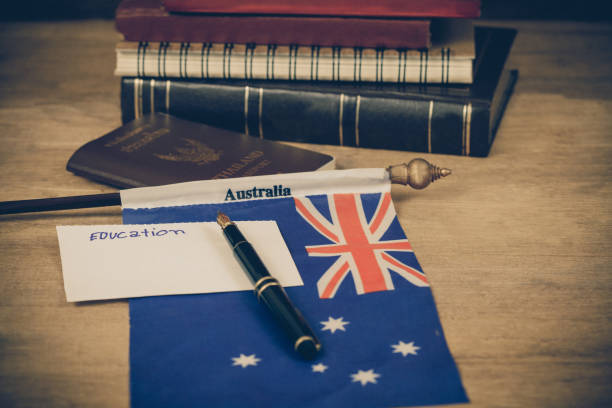How To Write A Character Getting Arrested (10 Best Tips)
Embarking on the art of crafting a character getting arrested is a literary journey that delves into the complexities of human experience and the intersection of justice and narrative tension.
It’s not just about the clang of handcuffs or the legal intricacies of the arrest process; it’s a profound exploration into the psyche of characters under the looming shadow of authority.
This guide aims to unravel the nuances involved in portraying a character’s arrest authentically, from understanding legal procedures and crafting compelling dialogue to infusing emotional resonance and connecting the arrest to broader themes within the narrative.
The arrest scene is not a mere plot point; it’s a gateway to exploring the depth of character, the impact of choices, and the repercussions that resonate far beyond the confines of the legal system.
So, let’s embark on this literary odyssey, where each word is a step into the arresting realm of storytelling.
How To Write A Character Getting Arrested
Establish the Setting
Begin by describing the environment where the arrest takes place. Provide details about the time of day, location, and any relevant surroundings.
Introduce the Character
Introduce the character who will be arrested. Briefly describe their background, personality, or any relevant information that sets the stage for the arrest.
Establish the Reason for Arrest
Clearly define why the character is being arrested. This could be a crime they committed, a misunderstanding, or a wrongful accusation. Ensure the reason aligns with the overall narrative.
Build Tension
Create a sense of tension and anticipation leading up to the arrest. Use descriptive language to convey the character’s emotions, thoughts, and reactions.
Incorporate Dialogue
Include dialogue between the character and law enforcement officers, bystanders, or any other relevant individuals. This adds realism and depth to the scene.
Describe the Arrest Process
Detail the step-by-step process of the arrest. Include physical actions, such as handcuffing, reading rights, and any necessary procedures. Be accurate in portraying the legal aspects.
Capture Emotions
Highlight the emotional turmoil experienced by the character during the arrest. Explore feelings of fear, confusion, or defiance to make the scene more compelling.
Include Observers’ Reactions
Incorporate reactions from bystanders or onlookers. This could add different perspectives and contribute to the overall atmosphere of the scene.
Conclude with Aftermath
Conclude the scene by addressing the aftermath of the arrest. Consider the impact on the character’s life, relationships, or the overall plot. This sets the stage for future developments.
Maintain Consistency
Ensure that the portrayal of the arrest aligns with the overall tone and genre of your story. Consistency is key for a believable and engaging narrative.

Research and Understanding
In the realm of storytelling, Research and Understanding are the unsung architects behind the grandeur of narrative tapestries. Imagine them as the Sherlock Holmes and Hercule Poirot of the writing process, navigating through the labyrinth of authenticity to unearth the golden nuggets of realism.
Like literary detectives, writers embark on a quest, armed with the magnifying glass of thorough research and the deductive reasoning of profound understanding.
These dynamic duos unravel the intricacies of legal procedures, law enforcement protocols, and the human psyche, ensuring that every word drips with the veracity that captivates readers and transports them into a world crafted with the precision of a watchmaker’s masterpiece.
In the dance between creativity and accuracy, Research and Understanding are the choreographers, orchestrating a symphony that resonates with the harmonious chords of believability and intrigue.
Conducting thorough research on legal procedures and law enforcement protocols
Embarking on the literary journey of crafting a narrative involving legal procedures and law enforcement demands a meticulous exploration akin to a legal scholar donning the robes of investigation. Conducting thorough research in this realm becomes the writer’s passport to authenticity, unlocking the gates to a world often shrouded in complexity.
It entails delving into legal codes, court proceedings, and law enforcement manuals with the fervor of a detective in pursuit of a crucial clue.
This research is not merely a perusal of texts; it is a descent into the intricacies of legal intricacies and the nuances of police protocol.
It requires the author to become a virtual apprentice to legal experts, absorbing the lexicon and rhythm of courtroom dramas and street-level investigations.
The outcome is a narrative that not only resonates with credibility but also imparts a vivid sense of realism, allowing readers to traverse the labyrinth of legal landscapes with confidence in the author’s grasp of the subject matter.
Familiarizing oneself with different types of arrests (e.g., felony, misdemeanor) and their implications
To master the art of crafting a compelling arrest scene, one must delve into the diverse spectrum of legal categorizations, immersing oneself in the labyrinthine distinctions between felonies and misdemeanors.
It’s akin to navigating a legal atlas, with each type of arrest representing a distinct topography of consequences and implications.
Understanding felonies, the weighty behemoths of criminal charges, and misdemeanors, the subtler transgressions, is like deciphering the contrasting tempos of a legal symphony.
The writer becomes an adept conductor, orchestrating the narrative with the finesse required to convey the gravity of a felony arrest or the nuanced repercussions of a misdemeanor.
This familiarity is not a mere acquaintance with legal jargon; it is a deep dive into the ripple effects these distinctions create, shaping characters and plotlines with a precision that resonates authenticity throughout the literary landscape.
Studying real-life arrest stories to capture authentic details and emotions
Embarking on a quest for narrative authenticity, a writer delves into the real-life tapestry of arrest stories, where the raw and unfiltered emotions of the human experience intertwine with the stark realities of law enforcement.
It’s a journey that transcends the pages of textbooks, immersing the storyteller in the visceral narratives of individuals entangled in the web of arrest.
Studying these real-life chronicles becomes an exercise in empathy and observation, as the writer dissects not only the legal intricacies but also the profound emotional undertones that accompany such pivotal moments.
From the surge of adrenaline in the face of apprehension to the vulnerability of processing one’s own transgressions, each authentic detail is a brushstroke on the canvas of veracity.
These real-life arrest stories serve as windows into the human psyche, enabling the writer to paint characters with hues borrowed from the palette of genuine experience, ensuring that the narrative resonates with a poignant truth that captivates and lingers in the reader’s imagination.
Developing the Character
In the alchemical crucible of storytelling, crafting a character is not a mere exercise in wordplay; it’s an act of conjuration, a summoning of souls from the netherworld of imagination.
Developing a character is akin to sculpting from the ethereal clay of ideas, molding them into beings that breathe, bleed, and resonate with the heartbeat of the narrative.
It’s an intricate dance between creator and creation, where quirks, scars, and dreams are woven into the very fabric of existence. Each character is a universe unto itself, birthing constellations of complexities and contradictions that challenge the very essence of humanity.
Like a masterful puppeteer, the writer pulls the strings of backstory and motivation, orchestrating a symphony of emotions that plays out across the stage of the reader’s mind.
In the realm of character development, words cease to be ink on paper; they transform into enchantments that give life to the imaginary, beckoning readers to embark on a journey where the characters are not just figments of imagination but intimate companions in the unfolding tale of existence.
Establishing the character’s background and personality traits leading to the arrest
Delving into the labyrinth of character creation, establishing a character’s background and personality traits is akin to unearthing the roots of a mighty oak, intricately entwined with the soil of their experiences.
Before the handcuffs tighten and the echoes of sirens pierce the air, the narrative must unfurl the intricate tapestry of the character’s past.
Every triumph, every scar, and every whispered secret is a stroke on the canvas of their existence. Personality traits become the palette, coloring the character’s reactions and decisions with hues of resilience, vulnerability, or defiance.
The arrest, then, becomes more than a mere plot point—it is the crescendo in a symphony of choices, consequences, and the indomitable spirit of the character.
It is the moment when the shadows of the past converge, casting a stark light on the path that led to this juncture.
In the delicate dance of storytelling, the arrest is not just an event—it is the culmination of a life intricately lived, a climax that resonates with the reader’s understanding of the character’s journey.

Crafting a detailed character profile to guide the arrest scene’s authenticity
Crafting a detailed character profile is the meticulous architect’s blueprint, the compass that guides the writer through the intricate maze of storytelling, and nowhere is this more crucial than in the crucible of an arrest scene.
A character’s profile becomes the literary GPS, navigating the nuances of their psyche, motivations, and idiosyncrasies with surgical precision.
It is the accumulation of whispered secrets, unspoken fears, and triumphant victories, all etched onto the parchment of their existence.
As the arrest scene unfolds, this character profile serves as the North Star, ensuring authenticity in the character’s reactions, choices, and the emotional crescendo of the moment.
Every raised heartbeat, every bead of sweat, and every silent plea is a manifestation of the character’s essence, meticulously woven into the fabric of the narrative.
In the realm of storytelling, a well-crafted character profile is not a luxury but a necessity, the linchpin that transforms words on a page into a living, breathing testament to the art of storytelling.
Setting and Atmosphere
In the kaleidoscopic tapestry of storytelling, setting and atmosphere emerge as the sorcerers wielding the paintbrushes that color the canvas of imagination.
They are not mere backdrops; they are the alchemists concocting the elixir that transports readers to worlds both familiar and fantastical.
Whether the gritty urban sprawl echoing with the distant wail of sirens or the serene silence of a moonlit forest, each setting is a character in its own right, whispering secrets and shaping destinies.
Atmosphere, that elusive wisp of emotion hanging in the narrative air, is the fragrance that lingers long after the last page is turned.
It’s the chill that dances down the spine in a haunted mansion or the electric charge of anticipation beneath the neon glow of a city skyline.
Together, setting and atmosphere are the puppeteers pulling the strings of reader emotions, orchestrating a symphony that transcends the written word and beckons the audience to step into the portal of imagination.
Choosing an appropriate setting for the arrest (e.g., urban street, suburban home, police station)
Selecting the setting for an arrest scene is akin to choosing the stage for a pivotal act in a grand theatrical performance.
It is a decision that transcends mere physicality; it is the strategic placement of the spotlight on the narrative chessboard.
The urban street, with its labyrinthine alleys and the pulse of city life, casts the arrest in the harsh glare of public scrutiny, amplifying the stakes. Alternatively, the suburban home, a supposed haven of tranquility, transforms the arrest into an intrusion, a jarring disruption of the mundane.
The police station, a bastion of authority, provides a structured backdrop, underscoring the formality and gravity of the event. Each setting is a narrative fulcrum, dictating the dynamics of tension, emotion, and the resonance of consequences.
Like a director choosing a cinematic backdrop, the writer, too, must consider the symbiosis between setting and arrest, ensuring that the stage is set not just for the unfolding drama but for an immersive experience that captivates the reader’s senses.
Describing the atmosphere and weather conditions to enhance the scene’s mood
The atmosphere and weather conditions in a scene serve as the maestros of mood, orchestrating the emotional symphony that reverberates through the narrative.
The dance between atmosphere and emotion is akin to a silent conversation, each nuance of the setting whispering secrets to the reader’s subconscious.
A stormy night, with thunderous applause and torrents of rain, can be a dramatic accomplice to an arrest, casting an ominous shroud over the proceedings.
In contrast, the crisp air of a moonlit evening might lend a surreal calmness to an otherwise tumultuous moment. The weather becomes a silent protagonist, its cadence syncing with the beating heart of the scene, be it the relentless heat intensifying the pressure or a chilling breeze carrying the weight of foreboding.
By deftly describing the atmosphere and weather, the writer transforms the setting into a character, ensuring that the reader not only sees but feels the pulse of the moment, and in doing so, becomes an active participant in the unfolding drama.
Building Tension
Building tension within the narrative is akin to playing a high-stakes poker game with the reader’s emotions, each sentence a calculated bet that tightens the narrative screws.
It’s the subtle art of weaving a suspenseful tapestry, where every word becomes a puppeteer pulling at the reader’s curiosity.
Tension is the shadow that tiptoes on the edges of anticipation, making the heart race with the promise of revelation. Like a maestro orchestrating a crescendo, the writer deploys cliffhangers, unanswered questions, and the rhythmic beat of uncertainty.
The narrative becomes a co-conspirator, conspiring with the reader’s psyche to create a delicious discomfort that keeps them on the edge of their literary seat.
In this dance of words, building tension is not a mere narrative device; it is the alchemy that transforms a story from a passive read into an immersive experience, where the turning of each page is an act of both trepidation and exhilaration.
Gradually escalating tension through dialogue, internal thoughts, and external actions
Escalating tension within the narrative is an art of subtle mastery, a delicate dance across the tightrope of suspense.
Dialogue becomes the verbal battlefield, where every uttered word carries the weight of unspoken implications, creating a verbal minefield that ratchets up the stakes.
Internal thoughts become the clandestine whispers of the characters’ fears and desires, a psychological chess game that unfolds beneath the surface. External actions, like choreographed maneuvers in a high-stakes heist, amplify the urgency, tightening the narrative screws with every heartbeat.
It’s the synergy between dialogue, internal musings, and external movements that transforms a mere narrative into a heart-thumping symphony.
The gradual crescendo of tension is not just a narrative device; it is a literary sorcery that binds the reader in its spell, compelling them to turn each page with a mix of anticipation and trepidation, eager to unravel the enigma that awaits at the narrative’s zenith.
Dialogue and Interactions
In the labyrinth of storytelling, dialogue and interactions are the electric currents that surge through the narrative, sparking life into the characters and igniting the pages with the fires of connection.
Dialogue is not merely the exchange of words; it is a kinetic dance where every sentence is a step, revealing the rhythm of relationships and the melodies of conflict.
Characters converse not in mere words but in the unspoken pauses, the pregnant silences pregnant with unexplored emotions. Interactions are the silent ballet between personalities, where glances, touches, and nuances create a tapestry of understanding or discord.
It’s a symphony where each character becomes a note, and their exchanges compose the melody that lingers in the reader’s mind long after the final page has turned.
In the realm of storytelling, dialogue and interactions are not just narrative devices; they are the invisible threads weaving the very fabric of the reader’s connection to the story, a symphonic conversation that transcends the written word.
Crafting authentic and impactful dialogue for law enforcement officers and the arrested character
Crafting authentic and impactful dialogue for law enforcement officers and the arrested character is akin to choreographing a verbal ballet on the precipice of tension and authority.
Each spoken word is a dance move, precise and purposeful, delineating the power dynamics and emotional currents of the scene.
The law enforcement officer’s words resonate with authority, a symphony of procedural clarity and stoic resolve. Meanwhile, the arrested character’s dialogue is a mirror reflecting a myriad of emotions – defiance, fear, or perhaps an undercurrent of regret.
It’s a linguistic sparring match where the stakes are freedom and justice. The dialogue becomes a tightrope, balancing legal formalities with the raw, unfiltered emotions of the moment.
Crafting such dialogue requires not just an understanding of the procedural lexicon but a keen insight into the human psyche under the duress of authority.
It is in these exchanges that the narrative breathes authenticity, and the reader becomes an immersed witness to the unfolding drama.
Incorporating non-verbal cues and body language to convey tension and emotions
In the symphony of storytelling, the artistry of conveying tension and emotions extends beyond the spoken word; it resides in the silent ballet of non-verbal cues and body language.
Characters, like masterful dancers, communicate through the subtlety of a raised eyebrow, the clenching of fists, or the unsteady rhythm of a heartbeat.
These non-verbal cues are the brushstrokes on the canvas of emotion, revealing the unspoken layers beneath the surface. A furrowed brow may betray concealed fear, a clenched jaw may signal unyielding determination, and averted eyes may hint at the weight of guilt.
It’s a choreography of gestures and expressions that transcends language, allowing the reader to feel the tension in the charged air and taste the emotions lingering in the unspoken spaces.
In the realm of storytelling, the potency of non-verbal cues is not a mere supplement to dialogue; it is a silent language that speaks volumes, immersing the reader in the visceral ebb and flow of the narrative’s emotional landscape.

Ensuring consistency in character reactions based on their personalities and situations
Ensuring consistency in character reactions is the sacred covenant that maintains the authenticity of the narrative realm. Characters, like living entities, possess distinct personas, and their reactions become the fingerprints that mark their emotional identity.
It is imperative that the tapestry of their responses align with the hues of their established personalities. A stoic hero should not suddenly crumble under pressure, nor should a cautious individual recklessly leap into the unknown.
In every situation, whether amid triumph or turmoil, characters must respond in harmony with the chords of their inherent nature.
This consistency is the glue that binds the reader to the characters, creating a believable symbiosis where each reaction becomes an anticipated note in the grand symphony of the storyline.
The writer, akin to a character psychologist, must navigate the labyrinth of emotions with a steady hand, ensuring that every character breathes with a vitality that resonates truth, anchoring the narrative in the bedrock of authenticity.
Legal Realism
Legal realism is the literary alchemy that transmutes the dry bones of legal doctrines into the vibrant flesh of narrative authenticity. It’s not just a mere adherence to legal accuracy; it’s the art of infusing the veins of the story with the lifeblood of jurisprudential truth.
Legal realism invites the writer to don the robes of a legal virtuoso, wielding the gavel of precision and the scales of veracity.
It’s the delicate balance between the rigid framework of legal codes and the fluidity of creative expression, where the writer dances on the tightrope of credibility without sacrificing the narrative’s imaginative flair.
Legal realism is the North Star guiding the narrative through the intricate constellations of legal intricacies, ensuring that the story resonates with a legal cadence that captivates and educates.
In the symphony of storytelling, legal realism is not just a note; it is the silent conductor orchestrating a harmonious dance between the law and the limitless realms of the writer’s imagination.
Adhering to legal accuracy to maintain credibility in the arrest scene
Adhering to legal accuracy in the crafting of an arrest scene is the anchor that keeps the narrative tethered to the shores of credibility.
It is the vigilant sentinel guarding against the turbulence of creative liberties, ensuring that the legal landscape portrayed is not a mere mirage but a faithful reflection of jurisprudential reality.
Like a legal eagle soaring through the intricacies of statutes and procedures, the writer becomes a custodian of accuracy.
The details of arrest, from the initial encounter to the courtroom drama that may ensue, must echo the cadence of legal authenticity.
By embracing the nuances of legal accuracy, the writer not only honors the integrity of the justice system but also fortifies the narrative with a sense of believability that resonates with readers.
In the realm of storytelling, the commitment to legal precision is not a constraint but a powerful tool that elevates the arrest scene, transforming it into a vivid tableau where the law and fiction coalesce seamlessly.
Seeking input from legal professionals for feedback and accuracy checks
In the pursuit of narrative veracity, seeking input from legal professionals is akin to consulting maestros for a symphony’s composition.
Their expertise becomes the North Star, guiding the writer through the labyrinth of legal intricacies to ensure that every note struck in the arrest scene resonates with juridical truth. Legal professionals become the literary custodians, meticulously scrutinizing the nuances of legal procedures and protocols.
Their insights serve as the compass that steers the narrative ship, preventing it from drifting into the seas of legal implausibility.
The collaboration between writer and legal expert is a symbiotic dance, where creative vision marries legal accuracy, birthing a narrative that not only captivates but also educates.
In this dynamic interplay, seeking input from legal professionals transforms the arrest scene into a testament of accuracy, fortifying the narrative with a shield of credibility that withstands the scrutiny of even the most discerning readers.
Emotional Resonance
Emotional resonance is the elusive melody that reverberates through the narrative, reaching into the reader’s soul and leaving an indelible imprint.
It’s not just about characters shedding tears or erupting in laughter; it’s the subtle vibration beneath the words that creates an empathic symphony.
Like a skilled conductor, the writer orchestrates emotions with the finesse of a maestro, ensuring that every heartache, every joy, and every silent scream is not merely witnessed but felt.
Emotional resonance is the storyteller’s alchemy, transforming ink on paper into a conduit of shared human experience. It transcends the boundaries of the narrative, becoming a whispered confidant to the reader’s own triumphs and tribulations.
In the realm of storytelling, emotional resonance is not a mere echo; it’s the lingering melody that accompanies the reader long after the final chapter has unfolded, a testament to the enduring power of a well-told tale.
Portraying the psychological impact of the arrest, such as fear, regret, or defiance
Portraying the psychological impact of an arrest is akin to unveiling the complex mosaic of the human psyche under the harsh spotlight of authority.
Fear, that visceral primal instinct, may pulse through the arrested character like an electric current, casting shadows of uncertainty and vulnerability.
Regret, a haunting specter, may linger in the recesses of their mind, a silent companion whispering about the roads not taken. Defiance, a formidable force, may surge as a shield against the encroaching reality, transforming the arrest into a battleground of wills.
Each emotion becomes a brushstroke on the canvas of the character’s mental landscape, creating a vivid portrait of the psychological aftermath.
It’s not just about the clang of handcuffs or the cold steel of a jail cell; it’s the echoes of fear, the echoes of regret, and the echoes of defiance that resonate, making the arrest scene a profound exploration into the labyrinth of the human soul.
Connecting the arrest to broader themes within the narrative
Connecting the arrest to broader themes within the narrative is the narrative architect’s stroke of brilliance, weaving the arrest scene into the intricate tapestry of the overarching story.
It becomes more than a pivotal moment; it metamorphoses into a symbolic nexus, a convergence of themes that ripples through the narrative’s veins.
Whether it echoes the consequences of past choices, heralds the climax of a character arc, or serves as a catalyst for impending conflicts, the arrest becomes a prism refracting the story’s deeper hues.
It acts as a thematic anchor, grounding the reader in the resonance of the narrative’s broader message.
The arrest scene transcends its immediate context, evolving into a microcosm that encapsulates the essence of the entire tale, leaving readers with a profound understanding that every arrest is not merely a legal entanglement but a thematic portal to the heart of the story itself.
Resolution and Consequences
Resolution and consequences in a narrative are the dueling forces that dance on the precipice of closure, like cosmic energies converging to shape the destiny of characters and the tale they inhabit.
Resolution is not just tying loose ends; it’s the literary alchemy that transmutes chaos into clarity, leaving readers with a satisfying catharsis. Yet, entwined with resolution is the formidable specter of consequences, a relentless force that unveils the aftermath of choices and actions.
It’s a dual narrative climax, a symphony of resolution’s crescendo harmonizing with the haunting echoes of repercussions.
The aftermath is not a mere epilogue; it’s a glimpse into the future, a roadmap of scars and victories that linger in the narrative ether.
In this intricate dance, resolution and consequences become the indelible ink that inscribes the narrative’s final chapter, creating an unforgettable imprint in the reader’s mind that lingers long after the story has found its resolution.
Frequently Asked Questions (FAQ) about How To Write A Character Getting Arrested
Why is it essential to conduct thorough research on legal procedures when writing a character getting arrested?
Conducting thorough research on legal procedures ensures narrative credibility, portraying an arrest scene with accuracy and authenticity, which resonates with readers and adds depth to the storytelling.
How can non-verbal cues and body language be effectively incorporated to convey tension during an arrest scene?
Non-verbal cues and body language are powerful tools for conveying tension. Utilize gestures, facial expressions, and physical reactions to amplify the emotional impact, providing a nuanced portrayal of the characters’ experiences.
What role does the setting and atmosphere play in enhancing the mood of an arrest scene?
The setting and atmosphere are integral in setting the tone of an arrest scene. They act as silent collaborators, influencing the reader’s perception and immersing them in the emotional and physical landscape of the arrest, enhancing the overall mood.
How can legal realism be balanced with creative liberties when writing an arrest scene?
Balancing legal realism with creative liberties involves maintaining accuracy in legal details while allowing room for creative expression. This delicate balance ensures a narrative that is both authentic and engaging without compromising the integrity of the legal context.
Why is it crucial to seek input from legal professionals for accuracy checks in an arrest scene?
Seeking input from legal professionals ensures that the arrest scene adheres to legal accuracy, avoiding misrepresentations and strengthening the narrative’s credibility. Legal experts provide valuable insights that contribute to the scene’s authenticity.
How can emotional resonance be effectively portrayed during and after an arrest?
Portraying emotional resonance involves delving into the psychological impact of the arrest on characters. Explore their fears, regrets, and defiance to create a multi-dimensional emotional experience that resonates with readers.
In what ways can an arrest scene be connected to broader themes within the narrative?
Connecting an arrest scene to broader themes involves intertwining the legal event with overarching story themes. This connection adds depth and significance, making the arrest a pivotal moment that echoes the narrative’s core messages and motifs.
What role do consequences play in the resolution of an arrest scene?
Consequences are crucial in the resolution of an arrest scene, illustrating the aftermath of characters’ actions. Examining the repercussions adds layers to the narrative, contributing to a well-rounded and impactful resolution.
Conclusion
In the intricate artistry of crafting a character getting arrested, we navigate through the realms of legality, emotions, and narrative significance.
This guide has illuminated the path to authenticity, urging writers to delve into meticulous research, infuse scenes with evocative non-verbal cues, and strike a delicate balance between legal realism and creative expression.
The setting and atmosphere become accomplices in enhancing the narrative mood, while seeking input from legal professionals safeguards accuracy.
The emotional resonance of an arrest scene and its connection to broader themes within the narrative deepen the reader’s engagement, while consequences add a poignant touch to the resolution.
As we conclude this literary exploration, remember that writing a character’s arrest is not merely a plot point—it is a journey into the labyrinth of human experiences, legal intricacies, and the multifaceted facets of storytelling, urging writers to craft scenes that resonate long after the handcuffs have clicked shut.






